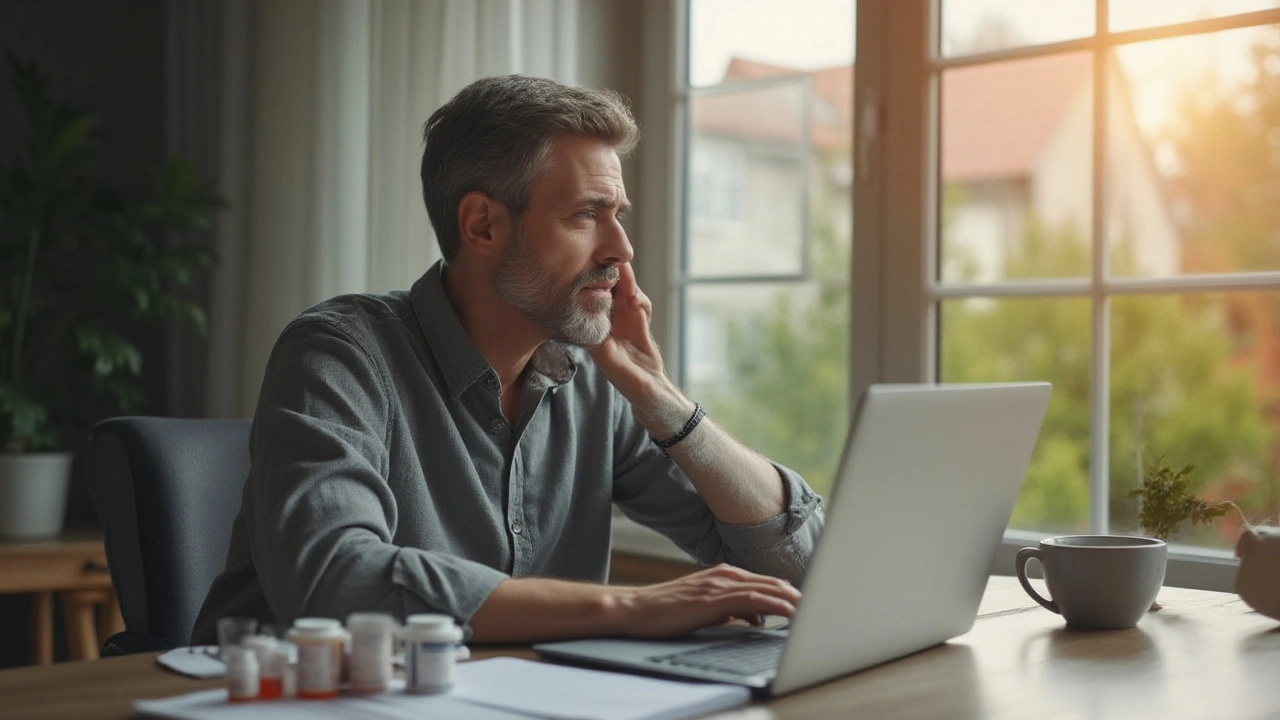Safe Online Pharmacies: How to Buy Real Medicine Without Getting Scammed
Thinking about ordering meds from the internet? You’re not alone – millions do it every year. The trick is finding a pharmacy that actually ships genuine drugs and keeps your data safe. Below you’ll get the exact steps I use to sift out the junk and land on a trustworthy site.
Red flags that mean a pharmacy is probably a scam
First, scan the homepage for these warning signs. If the site promises "no prescription needed" for prescription‑only drugs, run the alarm. Crazy discounts that sound too good to be true (like 80% off brand‑name antibiotics) usually hide counterfeit pills.
Check the URL – look for https and a padlock icon. A missing SSL certificate means any info you type could be intercepted. Also, pay attention to the contact details. A real pharmacy lists a physical address, a working phone number, and a licensed pharmacist you can reach.
Another tell‑tale sign is the absence of clear licensing info. In the U.S., a legitimate online pharmacy will display its NABP (National Association of Boards of Pharmacy) verification or a .pharmacy domain. In Europe, look for the EU‑wide “EU‑Safe” seal or a UK‑GPhC (General Pharmaceutical Council) registration number.
Steps to verify a pharmacy before you click ‘Buy’
1. Search the licence number. Type the pharmacist’s licence or registration ID into the regulator’s website. If it matches the pharmacy’s details, you’re good.
2. Read the privacy policy. A legit site explains how it stores your health data and whether it shares it with third parties. Vague or missing policies are a bad sign.
3. Look for independent reviews. Use sites like Trustpilot, Reddit health threads, or the Better Business Bureau. Real users will mention delivery times, product authenticity, and customer service quality.
4. Test the customer service. Send a quick email asking about a medication’s dosage or side‑effects. A professional reply from a qualified pharmacist is a green light; an auto‑reply or generic answer means you need to move on.
5. Check payment options. Secure methods like credit cards or PayPal offer fraud protection. Be wary of sites that only accept wire transfers or cryptocurrency – those are hard to trace if something goes wrong.
Once you’ve cleared these hurdles, add the medicine to your cart and double‑check the final price. Remember, the cheapest option isn’t always the safest. Factor in shipping costs, delivery time, and the pharmacy’s return policy.
For those who still feel uneasy, consider using a pharmacy‑verification service like the NABP’s VIPPS program. Enter the website address and get an instant safety score. It’s a quick way to avoid the guesswork.
Finally, keep a copy of your prescription and the receipt. If the medication looks off – wrong color, odd shape, or a bad smell – stop using it and contact the pharmacy immediately. Reporting a bad product helps protect other shoppers.
Buying meds online can save time and money, but only if you do a little homework first. Follow the red‑flag checklist, verify the licence, and you’ll get real medicine delivered straight to your door without the stress of a scam. Happy, safe shopping!
Thinking of buying Eliquis online? Get practical info, safety tips, and where to order. Clear guidance for 2025 with insider advice and real-world facts.
